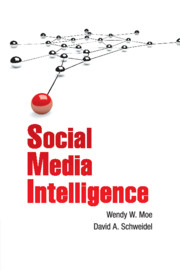2 - Fundamentals of Opinion Formation
from Part I - Foundations
Published online by Cambridge University Press: 05 February 2014
Summary
Before we jump into how organizations can build their social media intelligence capabilities, we first need to understand the science of opinions. Behind every social media comment posted is a person with an opinion. However, not everyone with an opinion chooses to share that opinion online. The opinions we see posted to social media are an outcome of a two-stage process. In the first stage, we form our opinions (opinion formation). Then, in the second stage, we share our opinions with others (opinion expression). However, we don’t share all of our opinions. Instead, the opinions that we ultimately post online are those that somehow merit sharing. In other words, the opinion expression stage can be thought of as an opinion filter that allows some of our opinions to pass through to be posted on social media while our other opinions remain unshared (see Figure 2.1).
To illustrate the distinction between opinion formation and expression, here’s an offline example that most of us are familiar with: the Monday morning quarterback. We all know one, and chances are we know more than one. The Monday morning quarterback has well-developed opinions about Sunday’s football games and wants to share those opinions with anyone willing to listen: Which plays should have been run. Which players should have been substituted. Which calls were blown by the officials and should have been challenged.
- Type
- Chapter
- Information
- Social Media Intelligence , pp. 18 - 34Publisher: Cambridge University PressPrint publication year: 2014

